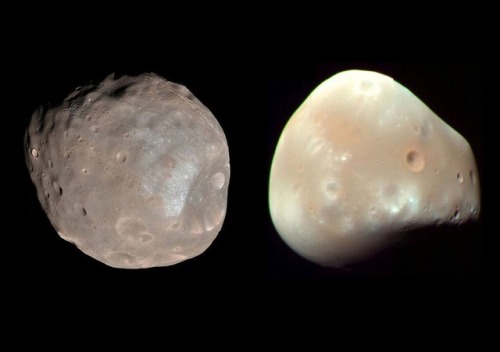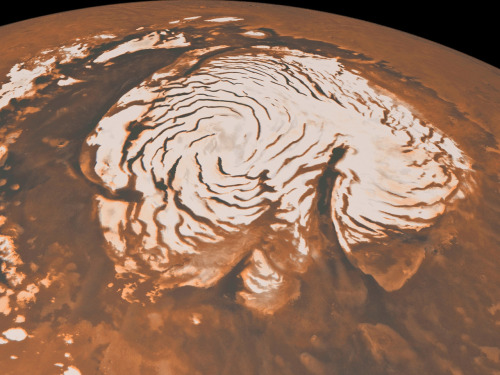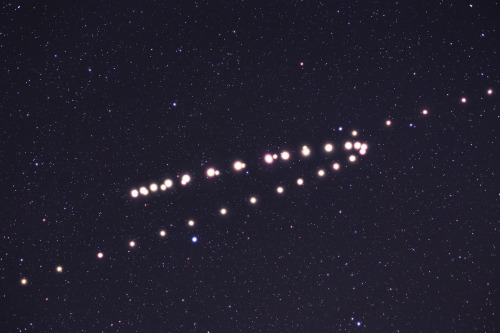How Accurate
How accurate
i just did a tarot reading
it said ur a bitch
More Posts from Duxgregis and Others










Delicate Temporary Tattoos That Look Like Real Watercolor Illustrations
London-based brand and temporary tattoo designers PAPERSELF prides itself in the creation of artistic temporary tattoos. Adorned with soft pastels and inspired by nature, the watercolor-like temporary tattoos are unique. They follow the new trend of artistic temporary tattoos, which mimic the delicacy of watercolor paintings. Find their entire collection in their Etsy shop.
View similar posts here!
Gifts for every budget
Personalized and custom jewelry
Jewelry shop
Gifts for her
Home gallery
Topic: Etsy, Illustration, Temporary Tattoos, Tattoos || by STAFF
I wonder what affect these types of events have on human perceptions
September 2017 Was 🔥 on the Sun
The Sun started September 2017 with flair, emitting 31 sizable solar flares and releasing several powerful coronal mass ejections, or CMEs, between Sept. 6-10.

Solar flares are powerful bursts of radiation. Harmful radiation from a flare cannot pass through Earth’s atmosphere to physically affect humans on the ground, however — when intense enough — they can disturb the atmosphere in the layer where GPS and communications signals travel.

CMEs are massive clouds of solar material and magnetic fields that erupt from the Sun at incredible speeds. Depending on the direction they’re traveling in, CMEs can spark powerful geomagnetic storms in Earth’s magnetic field.
As always, we and our partners had many missions observing the Sun from both Earth and space, enabling scientists to study these events from multiple perspectives. With this integrated picture of solar activity, scientists can better track the evolution of solar eruptions and work toward improving our understanding of space weather.

The National Oceanic and Atmospheric Administration (NOAA)’s Geostationary Operational Environmental Satellite-16, or GOES-16, watches the Sun’s upper atmosphere — called the corona — at six different wavelengths, allowing it to observe a wide range of solar phenomena. GOES-16 caught this footage of an X9.3 flare on Sept. 6, 2017.
This was the most intense flare recorded during the current 11-year solar cycle. X-class denotes the most intense flares, while the number provides more information about its strength. An X2 is twice as intense as an X1, an X3 is three times as intense, and so on. GOES also detected solar energetic particles associated with this activity.

Our Solar Dynamics Observatory captured these images of X2.2 and X9.3 flares on Sept. 6, 2017, in a wavelength of extreme ultraviolet light that shows solar material heated to over one million degrees Fahrenheit.

JAXA/NASA’s Hinode caught this video of an X8.2 flare on Sept. 10, 2017, the second largest flare of this solar cycle, with its X-ray Telescope. The instrument captures X-ray images of the corona to help scientists link changes in the Sun’s magnetic field to explosive solar events like this flare.

Key instruments aboard our Solar and Terrestrial Relations Observatory, or STEREO, include a pair of coronagraphs — instruments that use a metal disk called an occulting disk to study the corona. The occulting disk blocks the Sun’s bright light, making it possible to discern the detailed features of the Sun’s outer atmosphere and track coronal mass ejections as they erupt from the Sun.
On Sept. 9, 2017, STEREO watched a CME erupt from the Sun. The next day, STEREO observed an even bigger CME. The Sept. 10 CME traveled away from the Sun at calculated speeds as high as 7 million mph, and was one of the fastest CMEs ever recorded. The CME was not Earth-directed: It side-swiped Earth’s magnetic field, and therefore did not cause significant geomagnetic activity. Mercury is in view as the bright white dot moving leftwards in the frame.

Like STEREO, ESA/NASA’s Solar and Heliospheric Observatory, or SOHO, uses a coronagraph to track solar storms. SOHO also observed the CMEs that occurred during Sept. 9-10, 2017; multiple views provide more information for space weather models. As the CME expands beyond SOHO’s field of view, a flurry of what looks like snow floods the frame. These are high-energy particles flung out ahead of the CME at near-light speeds that struck SOHO’s imager.

Our Interface Region Imaging Spectrometer, or IRIS, captured this video on Sept. 10, 2017, showing jets of solar material swimming down toward the Sun’s surface. These structures are sometimes observed in the corona during solar flares, and this particular set was associated with the X8.2 flare of the same day.

Our Solar Radiation and Climate Experiment, or SORCE, collected the above data on total solar irradiance, the total amount of the Sun’s radiant energy, throughout Sept. 2017. While the Sun produced high levels of extreme ultraviolet light, SORCE actually detected a dip in total irradiance during the month’s intense solar activity.
A possible explanation for this observation is that over the active regions — where solar flares originate — the darkening effect of sunspots is greater than the brightening effect of the flare’s extreme ultraviolet emissions. As a result, the total solar irradiance suddenly dropped during the flare events.
Scientists gather long-term solar irradiance data in order to understand not only our dynamic star, but also its relationship to Earth’s environment and climate. We are ready to launch the Total Spectral solar Irradiance Sensor-1, or TSIS-1, this December to continue making total solar irradiance measurements.

The intense solar activity also sparked global aurora on Mars more than 25 times brighter than any previously seen by NASA’s Mars Atmosphere and Volatile Evolution, or MAVEN, mission. MAVEN studies the Martian atmosphere’s interaction with the solar wind, the constant flow of charged particles from the Sun. These images from MAVEN’s Imaging Ultraviolet Spectrograph show the appearance of bright aurora on Mars during the September solar storm. The purple-white colors show the intensity of ultraviolet light on Mars’ night side before (left) and during (right) the event.
For all the latest on solar and space weather research, follow us on Twitter @NASASun or Facebook.
GOES images are courtesy of NOAA. Hinode images are courtesy of JAXA and NASA. SOHO images are courtesy of ESA and NASA.
Make sure to follow us on Tumblr for your regular dose of space: http://nasa.tumblr.com.

I have a new plan: to go mad.
Fyodor Dostoevsky, in a letter to his brother Michael (via ughpoems)
Mars is the third solar body inhabited by humans. (cir. 2029)
Ten interesting facts about Mars
The ancient Sumerians believed that Mars was Nergal, the god of war and plague. During Sumerian times, Nergal was a minor deity of little significance, but, during later times, his main cult center was the city of Nineveh. In Mesopotamian texts, Mars is referred to as the “star of judgement of the fate of the dead”. The existence of Mars as a wandering object in the night sky was recorded by the ancient Egyptian astronomers and, by 1534 BCE, they were familiar with the retrograde motion of the planet. By the period of the Neo-Babylonian Empire, the Babylonian astronomers were making regular records of the positions of the planets and systematic observations of their behavior. For Mars, they knew that the planet made 37 synodic periods, or 42 circuits of the zodiac, every 79 years. They invented arithmetic methods for making minor corrections to the predicted positions of the planets.

Mars is the fourth planet from the Sun and the second-smallest planet in the Solar System after Mercury.

The bright rust color Mars is known for is due to iron-rich minerals in its regolith — the loose dust and rock covering its surface. The soil of Earth is a kind of regolith, albeit one loaded with organic content. According to NASA, the iron minerals oxidize, or rust, causing the soil to look red.

The rotational period and seasonal cycles of Mars are likewise similar to those of Earth, as is the tilt that produces the seasons. Mars is the site of Olympus Mons, the largest volcano and second-highest known mountain in the Solar System, and of Valles Marineris, one of the largest canyons in the Solar System.

Mars has two moons, Phobos and Deimos, which are small and irregularly shaped. These may be captured asteroids, similar to 5261 Eureka, a Mars trojan.

There are ongoing investigations assessing the past habitability potential of Mars, as well as the possibility of extant life. Future astrobiology missions are planned, including the Mars 2020 and ExoMars rovers. Liquid water cannot exist on the surface of Mars due to low atmospheric pressure, which is less than 1% of the Earth’s, except at the lowest elevations for short periods. The two polar ice caps appear to be made largely of water. The volume of water ice in the south polar ice cap, if melted, would be sufficient to cover the entire planetary surface to a depth of 11 meters (36 ft). In November 2016, NASA reported finding a large amount of underground ice in the Utopia Planitia region of Mars. The volume of water detected has been estimated to be equivalent to the volume of water in Lake Superior.

Mars can easily be seen from Earth with the naked eye, as can its reddish coloring. Its apparent magnitude reaches −2.91, which is surpassed only by Jupiter, Venus, the Moon, and the Sun. Optical ground-based telescopes are typically limited to resolving features about 300 kilometers (190 mi) across when Earth and Mars are closest because of Earth’s atmosphere.

Like Earth, Mars has differentiated into a dense metallic core overlaid by less dense materials. Current models of its interior imply a core with a radius of about 1,794 ± 65 kilometers (1,115 ± 40 mi), consisting primarily of iron and nickel with about 16–17% sulfur. This iron(II) sulfide core is thought to be twice as rich in lighter elements as Earth’s. The core is surrounded by a silicate mantle that formed many of the tectonic and volcanic features on the planet, but it appears to be dormant. Besides silicon and oxygen, the most abundant elements in the Martian crust are iron, magnesium, aluminum, calcium, and potassium. The average thickness of the planet’s crust is about 50 km (31 mi), with a maximum thickness of 125 km (78 mi). Earth’s crust averages 40 km (25 mi).

Mars lost its magnetosphere 4 billion years ago, possibly because of numerous asteroid strikes, so the solar wind interacts directly with the Martian ionosphere, lowering the atmospheric density by stripping away atoms from the outer layer. Both Mars Global Surveyor and Mars Expresshave detected ionised atmospheric particles trailing off into space behind Mars, and this atmospheric loss is being studied by the MAVEN orbiter. Compared to Earth, the atmosphere of Mars is quite rarefied.

Mars’s average distance from the Sun is roughly 230 million kilometres (143,000,000 mi), and its orbital period is 687 (Earth) days. The solar day (or sol) on Mars is only slightly longer than an Earth day: 24 hours, 39 minutes, and 35.244 seconds. A Martian year is equal to 1.8809 Earth years, or 1 year, 320 days, and 18.2 hours

Mars is scarred by a number of impact craters: a total of 43,000 craters with a diameter of 5 km (3.1 mi) or greater have been found. The largest confirmed of these is the Hellas impact basin, a light albedo feature clearly visible from Earth. Due to the smaller mass of Mars, the probability of an object colliding with the planet is about half that of Earth. Mars is located closer to the asteroid belt, so it has an increased chance of being struck by materials from that source. Mars is more likely to be struck by short-period comets, i.e., those that lie within the orbit of Jupiter. In spite of this, there are far fewer craters on Mars compared with the Moon, because the atmosphere of Mars provides protection against small meteors and surface modifying processes have erased some craters.
Martian craters can have a morphology that suggests the ground became wet after the meteor impacted.
Source 1
Source 2
images: NASA/JPL-Caltech/Univ. of Arizona , ESA, Tunç Tezel
astronomy facts
It’s so beautiful. It’s so beautiful it makes me want to cry. It’s the fulfillment of dozens, hundreds, thousands of people’s efforts, but it’s also the fulfillment of an idea suddenly becoming real.
Peter Saulson of Syracuse University, who has spent more than three decades working on the detection of gravitational waves.
Astronomers Strike Gravitational Gold In Colliding Neutron Stars
(via npr)
Au in some stars many, many, many AUs away.
I hope they taste better than Matt Damon's potatoes

Tending Your Garden … In Space via NASA http://ift.tt/2zpxa6R
“Nothing is more fairly distributed than common sense: no one thinks he needs more of it than he already has.”
— Rene Descartes, Discourse on the Method

Nicole and Chloë love the new apartment look. (at Aspire)
-
 l4ckychrms reblogged this · 1 month ago
l4ckychrms reblogged this · 1 month ago -
 seabewitched liked this · 1 year ago
seabewitched liked this · 1 year ago -
 fallcnshcrts liked this · 3 years ago
fallcnshcrts liked this · 3 years ago -
 unholyz liked this · 3 years ago
unholyz liked this · 3 years ago -
 rootworkin-arc reblogged this · 3 years ago
rootworkin-arc reblogged this · 3 years ago -
 nerdsgaysandarcherybabes liked this · 3 years ago
nerdsgaysandarcherybabes liked this · 3 years ago -
 littlemissleapyear liked this · 3 years ago
littlemissleapyear liked this · 3 years ago -
 house-of-void reblogged this · 3 years ago
house-of-void reblogged this · 3 years ago -
 house-of-void liked this · 3 years ago
house-of-void liked this · 3 years ago -
 fiiingertrap reblogged this · 3 years ago
fiiingertrap reblogged this · 3 years ago -
 dcsperados-a liked this · 3 years ago
dcsperados-a liked this · 3 years ago -
 sorrowsick-a reblogged this · 3 years ago
sorrowsick-a reblogged this · 3 years ago -
 jastun-frailthorn liked this · 3 years ago
jastun-frailthorn liked this · 3 years ago -
 somnium-led liked this · 3 years ago
somnium-led liked this · 3 years ago -
 ask-leona-a liked this · 3 years ago
ask-leona-a liked this · 3 years ago -
 hidiingplace reblogged this · 3 years ago
hidiingplace reblogged this · 3 years ago -
 doyourworkdamnit liked this · 3 years ago
doyourworkdamnit liked this · 3 years ago -
 james-nightshade liked this · 3 years ago
james-nightshade liked this · 3 years ago -
 dreamingofwolves liked this · 3 years ago
dreamingofwolves liked this · 3 years ago -
 14th-century-rat reblogged this · 3 years ago
14th-century-rat reblogged this · 3 years ago -
 14th-century-rat liked this · 3 years ago
14th-century-rat liked this · 3 years ago -
 beomgyus liked this · 3 years ago
beomgyus liked this · 3 years ago -
 alltimefade reblogged this · 3 years ago
alltimefade reblogged this · 3 years ago -
 alltimefade liked this · 3 years ago
alltimefade liked this · 3 years ago -
 gustingirl reblogged this · 3 years ago
gustingirl reblogged this · 3 years ago -
 anderswasrightt reblogged this · 3 years ago
anderswasrightt reblogged this · 3 years ago -
 anderswasrightt liked this · 3 years ago
anderswasrightt liked this · 3 years ago -
 highpriestofmorrigan reblogged this · 3 years ago
highpriestofmorrigan reblogged this · 3 years ago -
 prrp liked this · 4 years ago
prrp liked this · 4 years ago -
 divergenciies reblogged this · 4 years ago
divergenciies reblogged this · 4 years ago -
 river-mist liked this · 4 years ago
river-mist liked this · 4 years ago -
 heatwavcs liked this · 4 years ago
heatwavcs liked this · 4 years ago -
 sivar-ffxiv-hub reblogged this · 4 years ago
sivar-ffxiv-hub reblogged this · 4 years ago -
 thalsianiii liked this · 4 years ago
thalsianiii liked this · 4 years ago -
 cypris-thalsian reblogged this · 4 years ago
cypris-thalsian reblogged this · 4 years ago -
 whyrenjai liked this · 4 years ago
whyrenjai liked this · 4 years ago -
 pbnjcakes reblogged this · 4 years ago
pbnjcakes reblogged this · 4 years ago
